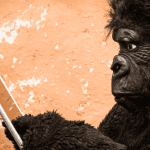 Creepy
Creepy  Creepy
Creepy  Technology
Technology 10 Scientific Breakthroughs of 2025 That’ll Change Everything
 Our World
Our World 10 Ways Icelandic Culture Makes Other Countries Look Boring
 Misconceptions
Misconceptions 10 Common Misconceptions About the Victorian Era
 Mysteries
Mysteries 10 Strange Unexplained Mysteries of 2025
 Miscellaneous
Miscellaneous 10 of History’s Most Bell-Ringing Finishing Moves
 History
History 10 Great Escapes That Ended Right Back in Captivity
 Weird Stuff
Weird Stuff 10 Fascinating Things You Might Not Know About Spiders
 Food
Food 10 Everyday Foods You Didn’t Know Were Invented by the U.S. Military
 History
History 10 Odd Things Colonial Americans Kept at Home
 Creepy
Creepy 10 More Representations of Death from Myth, Legend, and Folktale
 Technology
Technology 10 Scientific Breakthroughs of 2025 That’ll Change Everything
 Our World
Our World 10 Ways Icelandic Culture Makes Other Countries Look Boring
Who's Behind Listverse?

Jamie Frater
Head Editor
Jamie founded Listverse due to an insatiable desire to share fascinating, obscure, and bizarre facts. He has been a guest speaker on numerous national radio and television stations and is a five time published author.
More About Us Misconceptions
Misconceptions 10 Common Misconceptions About the Victorian Era
 Mysteries
Mysteries 10 Strange Unexplained Mysteries of 2025
 Miscellaneous
Miscellaneous 10 of History’s Most Bell-Ringing Finishing Moves
 History
History 10 Great Escapes That Ended Right Back in Captivity
 Weird Stuff
Weird Stuff 10 Fascinating Things You Might Not Know About Spiders
 Food
Food 10 Everyday Foods You Didn’t Know Were Invented by the U.S. Military
 History
History 10 Odd Things Colonial Americans Kept at Home
10 Silly Beliefs People Have about Animals
Mark Twain once said, “A lie can spread halfway around the world while the truth is still putting on its shoes.” In the days of the internet, we could modify this to “a lie can spread several times around the world—and become ingrained fact—before the truth even wakes up and rubs its bleary eyes.” This is no more true than when it comes to animal facts, something that people love to throw around the internet as bite sized nuggets of misinformation on social media, and the like. Today, we are here to dispel ten myths about animals that the modern world has made you believe, or at least reinforced.
Related: Top 10 Animals With Creepy Behaviors
10 The Blind Bat
We have all heard the expression “blind as a bat,” and we all know what it means. Whether it is meant in jest or in a more derogatory manner, the message is clear. You see very poorly, and they are ribbing you for it. Often, it is used to sarcastically point out when someone fails to see something that is rather obvious. We also know that bats use echolocation, which can give them a detailed sonar map of their environment. For this reason, plus the fact they seem bothered by light, we assume they see very poorly, or not at all.
However, this really could not be farther from the truth. The truth is that bats actually see quite well, at least at night, although they do not have the robust color vision that we do. As they are nocturnal and have eyes that are sensitive to low light conditions, they are bothered by bright lights, especially disturbing them while they are doing their hanging upside down and sleeping thing. So, why do they need echolocation? The thing is, bats hunt and live in the darkest places, so they need all the help they can get. It is an augmentation to their sight and helps them catch prey in the dark.[1]
9 The Nocturnal Cat
Cats are one of the most beloved pets in the world, and even most people who don’t have one still love looking at cat pictures. They are adorable and furry, and they bring chaos into our lives, which makes many of us smile—after we’ve gotten over the frustration, of course. The situation where they can be most frustrating is at night when many people report them causing a ruckus when they are trying to sleep. Most cat owners do little to discourage this behavior or reinforce it, thinking that cats are nocturnal and nature should be left alone as it is.
However, the truth is that cats are actually crepuscular. This means that they are more active at dawn and dusk when they use the low light conditions they see well in, as an advantageous time to catch prey. This behavior often leads to slightly more energy at night, but cats sleep most of the time, day or night. They will sleep more during the day than during the night, but this is an evolutionary behavior and does not mean they are nocturnal. In essence, they are storing up energy for the dusk hunt and are a little more active at night, still taking naps to prepare for the dawn hunt.[2]
8 The Smiling Dog
Many dog owners out there will insist that their pooch sometimes smiles at them, especially to smile back when they smile at the dog first. They will also insist that the dog is doing this as a show of happiness, similar to humans. This is a relatively common belief among dog owners, and it is hard to argue with someone when it comes to their personal animal. They, of course, know their pet better than anyone. And you never know; perhaps their pet is one of the first examples of a newly evolved form of dog that can smile to show happiness. However, the issue is that apart from a colloquial basis of believing our friends, there is not one shred of evidence that dogs smile to show happiness the way humans do.
Now, this doesn’t make it impossible for some dogs, or breeds of dogs, to have developed the ability to smile for reasons similar to humans. Still, it is important to be careful when anthropomorphizing animal behavior. No one has proven for sure it is impossible, but this isn’t evidence for it either, especially when attempts to find such links have failed. If dogs are smiling for a positive reason, it may still be a different emotion than what we would express.[3]
7 The Tippable Cow
For those who aren’t familiar with it, cow tipping is an alleged phenomenon that happens in the rural United States. The legends claim that bored rural teens will go out at night and tip over cows who are sleeping in the fields. It has been featured in popular media many times and has taken root in the imaginations of everyone who has never worked with cows.
For those who have worked with cows, either at a farm or using mathematics to study them, the idea is clearly preposterous. Physicists concluded that to tip a cow, you would need at least five decent-sized people, and that is if the cow is not resisting you, which it almost certainly would be. See, according to farmers who work with cows, they tend to be wary of strangers and of anyone at night, even people they know. Sneaking up on cows in order to tip them without them knowing would be next to impossible, even for someone who knows them. Finally, cows often sleep lying down, and you can’t tip over something that is already on the ground.[4]
6 The Naturally Aggressive Pit Bull
The pit bull is a dog that has managed to garner a really bad reputation. Many people think of them as violent or dangerous, and some urban centers have put a blanket ban on any similar breed. Some people think they are extra bad around children and are born with an aggressive and violent nature. Now, it is true that some pit bulls have been abused by dog fighting trainers and need to be retrained by experts, but plenty are not put through this at all. It is also true that pit bulls being used for dog fighting goes back a long way, but this doesn’t mean pit bulls are irredeemably bad dogs that are born to attack people.
The truth is that some pit bull breeds can be more aggressive to other dogs but not to humans, and the aggression toward dogs can be trained out of them. This is because, being trained for dog fighting, it was not a good trait for them to attack their trainer. However, the blanket bans can be a bit overly judicious even if you are worried about dogs who were former fighters, as many pit bull breeds were never bred for violence and make great companions for kids.[5]
5 The Wise Owl
Owls are seen as wise, and although this has been reinforced many times by popular modern media, it goes all the way back to ancient times. Athena was depicted with an owl, and she was the Greek goddess of wisdom. As for why people came to think this, a likely reason is simply because of how they look. They have large eyes, look a little bit like they are wearing glasses, and have extra-large brains. When you put all this together, it is not hard to imagine how people came to the conclusion that owls are super smarty pants birds.
However, the truth is owls actually aren’t all that smart, even compared to other birds. Owls do not have problem-solving abilities or the tool-using skills of birds like ravens or crows, and they do not stand out in this respect. So, why do owls have such huge brains? Well, their brains are large and packed with everything they need, but they aren’t intelligent in the conventional sense. Owls’ brains are designed to handle all the sensory data they need to effectively hunt at night, using their amazing vision and hearing to take down their prey.[6]
4 The Mousephobic Elephant
The myth that elephants are afraid of mice is probably most popularly depicted in Dumbo, but it goes back to the days of the ancient Greeks. Part of the reason the misconception took hold so strongly is because many scientists believed it for hundreds of years before anyone really even thought to challenge the idea. We have all heard the claim that elephants are afraid the mouse will go up its trunk and cause it to suffocate. The elephant, fearing this intrusion, goes absolutely nuts trying to avoid the mouse. However, the truth behind it is that elephants are sort of afraid of mice, but not for that reason.
Elephants get freaked out by anything fast and small zipping through their legs, especially something small enough and fast enough that they cannot track it. One scientist even saw an elephant act just as bothered by a small dog that kept running around it. Finally, even if a mouse did somehow go up an elephant’s trunk, it could easily blow it out, and it still has a mouth to breathe through as well.[7]
3 The Eternally Standing Horse
Some people have heard that horses sleep standing up, and it is true that they are capable of doing so. Horses, especially in the wild, are known to sleep standing up a good bit of the time. This is an old evolutionary trait from when more horses lived in the wild, and they had to protect themselves from predators. Despite their strength, horses actually take a decent bit of time to get back on their feet and more energy than we would use. For this reason, plus the fact that they can see better with their heads up high, they developed this ability. However, just because they do it some of the time does not mean they do it all the time.
Horses can rest partly by allowing one leg to rest while the others hold it up, but what it cannot do is get proper rest in that position. Since it is doing this to protect itself from predators, the sleep horses get in this position is not full REM sleep, allowing them to run away quickly if danger comes. For full REM sleep, horses need to lie down, and they do. Usually, this is done when the horse feels safe.[8]
2 The Camel with His Own Water Tower
Camels are fascinating animals, and many of us have experienced seeing one up close at a zoo. However, outside of a zoo, most of us are unlikely to have much in the way of experiences with camels. This is, of course, due to their well-known, desert-dwelling nature. They have such excellent abilities to survive in the desert that they have become the number one source of animal transport over the years in arid regions. This has led to many folk legends about the camel, including one popular myth many people believe: that they store water in their humps to survive the desert heat.
The truth is that the hump is actually there to store fat. This fat can help them survive in the desert but as a source of emergency food, not water. So if the hump doesn’t store water, then how do camels manage to survive for up to fifteen days without a drink? Well, apart from getting some water from the plants they eat, which helps them survive in the winter, they also simply lose far less water than most animals. They excrete a more concentrated form of urine and do not lose as much moisture through their breath and sweat as other animals.[9]
1 The Alpha Wolf
Today, the idea of an alpha wolf has become so ingrained that some people have applied it to human behavior. Some go so far as to label people as alpha, beta, or even other silly Greek letters like sigma. The idea is that in a social setting, there will always be a natural hierarchy of dominance and submission because, apparently, we are wolves. However, getting past the overall silliness of trying to compare people to canines, the whole thing isn’t even based on sound science.
The myth about wolves goes back to the 1940s and is based on outdated science. Studies that claimed to prove the theory in later years showed adult male wolves in captivity, which some scientists liken to a group of gangsters at a prison and not a real representation of how they form groups in the wild. Researchers have now looked at old studies in a new light and believe that what people thought they saw in the wild was just a male and female who had kids, and of course, the parents were the dominant wolves. Hence, the hierarchy of dominant and submissive adults so many believed in just becomes a normal family unit.[10]








